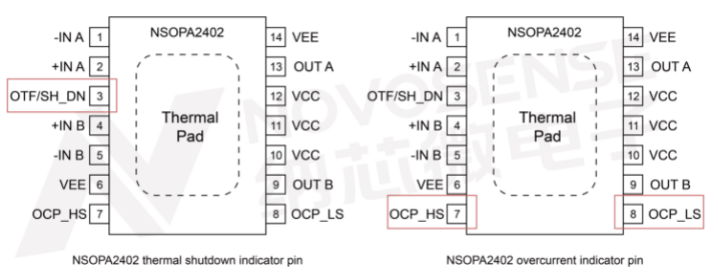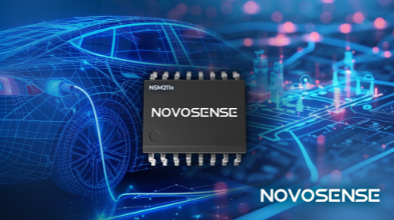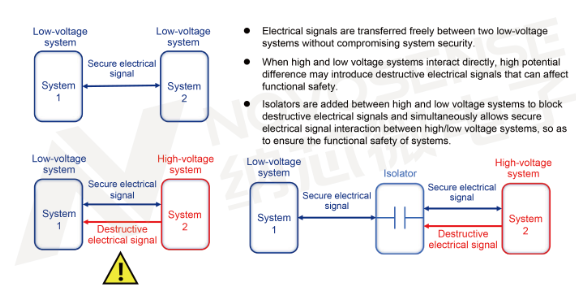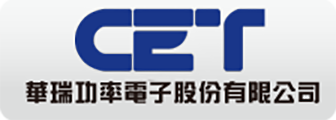- Ameya360 Component Supply Platform >
- Trade news >
- 400mA, High Output Slew Rate: NOVOSENSE's NSOPA240x Series Cracks the Challenge of Resolvers
400mA, High Output Slew Rate: NOVOSENSE's NSOPA240x Series Cracks the Challenge of Resolvers
With the continuous pursuit of high-precision, high-performance motor control technology, the ability of resolvers, as one of its core components, to accurately measure angular position and rotational speed becomes particularly important.
However, the special requirements of resolver drive circuits have always been a technical bottleneck in the development of the industry. To address this challenge, NOVOSENSE recently released the new NSOPA240x series of operational amplifier, which is designed to simplify circuit design and improve system robustness, bringing innovative solutions to resolver drive applications.
As electromagnetic sensors that can be used to accurately measure angular position and rotational speed, resolvers are widely used in industrial motor controls, servos, robots, and powertrain units in electric and hybrid vehicles. Particularly in electric vehicles, resolvers provide motor control algorithms with precise and stable position information, which is critical to ensuring ideal performance in a wide range of driving conditions. Through their unique operating principle, resolvers provide real-time and accurate feedback on the rotor angle and speed, enabling electric vehicles' motor control algorithms to accurately adjust the current output for smooth driving and instant response. In addition, resolvers' high temperature resistance, simple and reliable mechanism, compact size and low cost make them adaptable to the compact design requirements of electric vehicles and reduce overall costs.
In practice, the design of resolver drive circuits faces multiple challenges. First, the requirements for high current output and high slew rate must be met to ensure a stable excitation signal for resolvers. Second, simplifying circuit design and improving system robustness are also important issues faced by engineers. In addition, complex noise environments and stringent safety requirements bring more difficulties to the design.
With their excellent high gain bandwidth and slew rate, as well as continuous high output current drive function, NOVOSENSE's NSOPA240x high-current output operational amplifiers meet the stringent requirements of resolver primary coils for low-distortion and differential high-amplitude excitation. More importantly, NSOPA240x integrates internal thermal shutdown and overcurrent production, which not only optimizes the circuit design and reduces the system cost, but also significantly improves the overall system reliability and performance.
The automotive version of the NSOPA240x series meets the reliability requirements of AEC-Q100 Grade 1 and can work in harsh environments of -40~125°C. Different channel versions are available to meet different customer needs, with TO252-5 package for single-channel and HTSSOP14 package for dual-channel, as shown in the table below.

High current output capability - adapt to various resolver primary coil drives
Output current capability and output swing are among the most important indicators to measure the driving capability of power amplifiers. The relationship between load current and output swing directly determines the dissipated power in driving operational amplifiers. The excitation primary coil of a resolver usually has a very low DCR (DC resistance), typically less than 100Ω, so a strong current output capability up to 200mA is required to drive the coil. NSOPA240x is designed with a maximum continuous output current capability of 400mA, fully meeting the drive requirements of various resolvers.
High output slew rate - ensure undistorted primary coil excitation signal
Slew rate is one of the most important performance indicators reflecting the dynamic response of an operational amplifier, and the minimum requirement for undistorted sinusoidal signals is shown in the following formula:

Different types of resolvers have different requirements for the amplitude and frequency of the excitation signal. Taking a 7Vrms, 10kHz excitation signal as an example. According to the calculation results of the above formula, the minimum slew rate required to ensure no distortion is about 0.6 V/μs. With a slew rate of 5.5 V/μs, NSOPA240x meets most application requirements for resolver drives.
Integrated current limiting protection and overheating protection - improve resolver system reliability, and reduce complexity and cost
For the power level of several hundred mA at the primary drive end of a resolver, perfect protection measures must be taken, otherwise the system will be seriously threatened or even burned due to overheating and other reasons. NSOPA240x integrates a thermal shutdown protection function. When the chip junction temperature exceeds 173°C, the device will be disabled and the occurrence of a thermal shutdown event will be indicated by the OTF/SH_DN status. To prevent repeated triggering, the overtemperature shutdown function has a temperature hysteresis, where the junction temperature needs to fall back to 155°C before the device is re-enabled and the state of the OTF/SH_DN pin changes to indicate that the thermal shutdown event has stopped.
As shown in the figure below, NSOPA240x can provide customers with system-level functional safety and simultaneously indicate short circuit to power and short circuit to ground.

In addition, each operational amplifier in the chip has current limiting protection for the PMOS (high side) and NMOS (low side) output transistors, because overcurrent may be found on the high side or the low side. And two dedicated pins (as shown in the red box in the figure) are provided to distinguish between high side overcurrent and low side overcurrent, corresponding to the applications of short circuit to ground and short circuit to supply voltage respectively. When the output current returns to normal, the indicator pins will be released synchronously, allowing the system to easily cope with short circuit test scenarios similar to those specified in the ISO 16750 standard.
Online messageinquiry
- Week of hot material
- Material in short supply seckilling
| model | brand | Quote |
|---|---|---|
| TL431ACLPR | Texas Instruments | |
| BD71847AMWV-E2 | ROHM Semiconductor | |
| CDZVT2R20B | ROHM Semiconductor | |
| MC33074DR2G | onsemi | |
| RB751G-40T2R | ROHM Semiconductor |
| model | brand | To snap up |
|---|---|---|
| BP3621 | ROHM Semiconductor | |
| BU33JA2MNVX-CTL | ROHM Semiconductor | |
| TPS63050YFFR | Texas Instruments | |
| STM32F429IGT6 | STMicroelectronics | |
| ESR03EZPJ151 | ROHM Semiconductor | |
| IPZ40N04S5L4R8ATMA1 | Infineon Technologies |
- Week of ranking
- Month ranking
Qr code of ameya360 official account
Identify TWO-DIMENSIONAL code, you can pay attention to


Please enter the verification code in the image below:


























